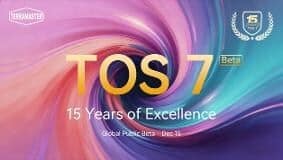Space Oddity, creator of “Blip” and the “K-Pop Radar” attended the Korea-US Startup Summit held at Pier 17 in New York, USA from Tuesday, September 20th to Wednesday, September 21st. Here, the startup spoke to Leo Thevenet, CEO of Le Cafe du Geek, about their visions in a brief interview.
Blip, the App that brings fandoms together
Space Oddity, the startup behind the K-Pop content App Blip, has observed the music market and its consumers closely before this launch. In 2019, following extensive data analysis of both the K-Pop market as well as the fandoms belonging to it, Space Oddity released “K-Pop Radar”.
The radar is able to detect fandom sizes and growth, trends, and presents this data objectively to present developments in the vast and diverse K-Pop community comprehensively and in an unweighted manner.
Following this extensive analysis, special outliers are singled out among the data, summarized briefly, and possible trend-scenarios are predicted. The data brief, rather than an overwhelming mass of information, can then be studied and matched to an artist’s public appearance and story.
Once the data is accumulated, it is presented in a dashboard. The charts are additionally released weekly on Thursdays through “Sirius XM”.
The goal of Space Oddity is to give a better understanding of an industry growing at a fast pace in the modern era, based on cultural research, IT, and data.
Their second project, Blip, aims at creating a multi-facetted experience for those interested in this diverse culture. It improves the fandom experience by making content more easily accessible for fans, thus reducing arising inconveniences. Information on shows, music releases, events, purchases, and schedules regarding artists are collected in one service, notifying fans of updates they may otherwise have missed or needed to look up. Only information relevant to fans of specific artists are curated for the user, gathered across multiple platforms. This could be data about performance as well, such as views and engagement across platforms, charts, and similar.
The community is given a place to socialize and hold events too, with fan voting, a space for selling K-Pop merchandise and a gallery. This way, fans could have a singular platform, rather than multiple communities scattered across a range of social media, to receive new updates and content from just their favorite artists, socialize and discuss it in the same space.
Together, K-Pop Radar and Blip act as a combination of a telescope and a microscope respectively: the Radar is able to show the entire spectrum of the rapidly growing industry in a comprehensive overview, while Blip acts as a magnifying lens into the fine details of any given community or artist specifically. Using this manner of dual service, companies as well as fans could greatly benefit from the transparency and community that Space Oddity has introduced with this service, and as the K-Pop industry continues to grow fast, many exciting developments are to be anticipated.



